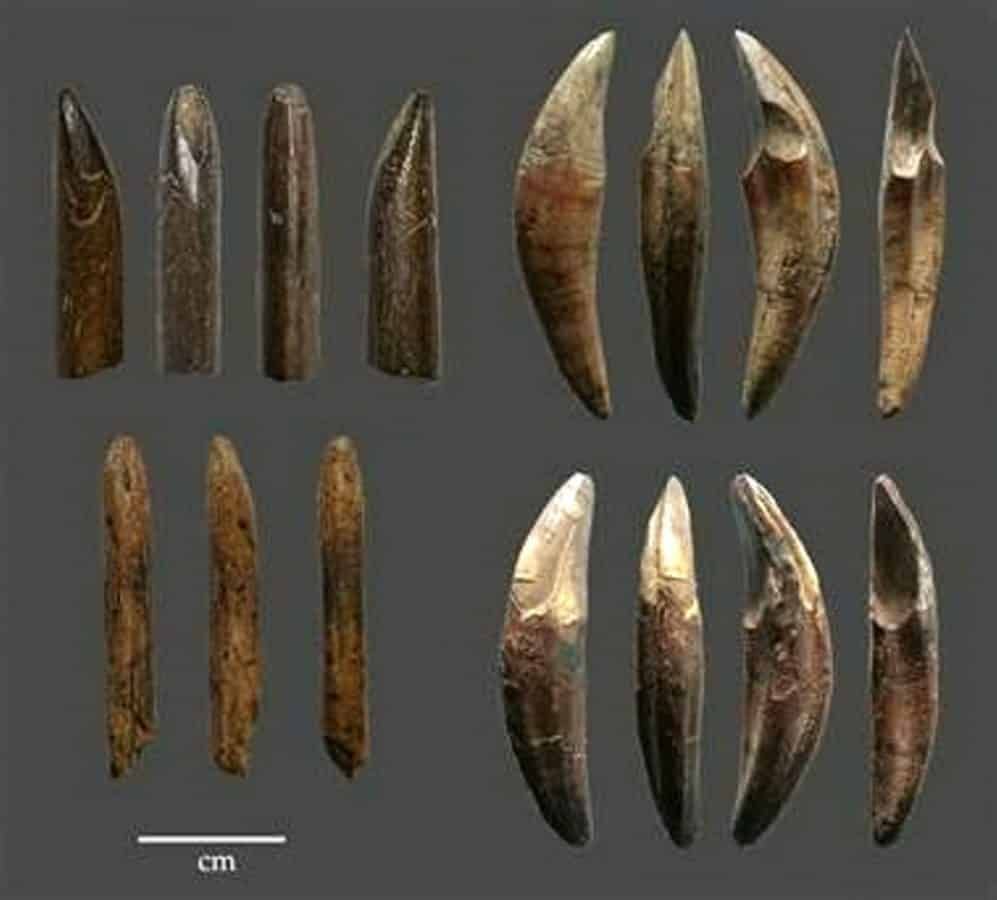
Humans colonised the South Asian rainforest at least 45,000 years ago by eating tree dwelling monkeys and giant squirrels, according to new research.
And they were eco-warriors, using an environmentally sustainable strategy – targeting adults so the creatures would live on to feed future generations.
It is the first direct evidence of people hunting primates and other small mammals and sheds fresh light on the evolution of our species.
The animals’ remains unearthed at the oldest archaeological site in Sri Lanka showed they had been cut up and then roasted.
They were found alongside complex bone and stone tools made by early beachcombers who came ‘out of Africa’ on boats.
The discovery is an example of Homo sapiens’ unique ability – enabling it to rapidly adapt to extreme environments untouched by primitive human ancestors.
Lead author Oshan Wedage, a doctoral candidate in archaeology said: “The results demonstrate specialised, sophisticated hunting of semi-arboreal and arboreal monkey and squirrel populations from 45,000 years ago in a tropical rainforest environment.”
His team at the Max Planck Institute for the Science of Human History, Jena, Germany, measured up to 15,000 pieces of bones.
Mr Wedage said: “These included fragments that show people were butchering these animals. They were also using the bones to potentially hunt other monkeys.”
The researchers say the adventurers were so intelligent they realised the creatures they relied upon were the most vulnerable to over exploitation.
They had a close knowledge of their life cycles and territories – which led to them using sustainable hunting strategies. They targeted only adult monkeys.
Co author Dr Noel Amano, also of the Max Planck Institute for the Science of Human History, added: “This was complemented by sophisticated bone tool technologies which were, in turn, created from the bones of hunted monkeys.”
The study published in Nature Communications said the settlers made sure they did not wipe out the tree living, or arboreal, animals.
This ensured they went on providing sustenance for them for tens of thousands of years.
Senior author Prof Michael Petraglia explained: “This ‘monkey menu’ was not a one-off, and the use of these difficult-to-catch resources is one more example of the behavioural and technological flexibility of H. sapiens.”
This is the oldest and longest record of sophisticated, active primate hunting by foragers – highlighting the distinctive ecological capacities of H. sapiens compared to its hominin ancestors and relatives.
As humans spread around the world they had to be able to survive in a range of diverse places – from deserts and high altitude settings to palaeoarctic conditions or tropical forests.
But previous research on the migration into Europe, the Middle East and Asia has often focused on increased efficiency in hunting, butchering and consuming medium to large game on the open ‘savanna’.
Alternatively, coastal settings have been seen as important sources of protein – stimulating human evolution and migration.
Tropical rainforests have been somewhat neglected in discussions – seen as isolated barriers to human movement, with disease, dangerous animals and limited resources all posing challenges.
In particular, when compared to the large animals of open savannas, small, fast and agile forest monkeys and squirrels are hard to capture – and provide smaller amounts of protein.
Catching them has long been considered a feature of technological and behavioural ‘complexity’ or ‘modernity’ unique to man.
Studies in Europe and West Asia has linked the practise both to human population growth and climatically-driven crises.
Traditionally, these have been considered to be particularly extreme around 20,000 years ago.
Co senior author Dr Patrick Roberts said: “Over the last two decades, research has highlighted human occupation of tropical rainforests in South Asia, Southeast Asia, and Melanesia at least as early as 45,000 years ago.
“So the potential for human reliance on small mammals in these settings prior to 20,000 years ago seems likely.”
Mr Wedage and colleagues applied state of the art scanning techniques to the bones and stones dug up at a massive cave known as Fa-Hien Lena in the remote village of Yatagampitiya.
It is the largest on the island and human skulls have revealed it was once home to it oldest prehistoric human settlement.
Surrounded by tropical greens, it measures 200 feet long, with an entrance 175 feet high and 160 feet wide. It sits 400 feet above sea level. There are areas inside which are over 400 feet high. The cave is also the home of a Buddhist temple.
The researchers, who also included international experts from around the world, plan further detailed analysis of the specimens.
These promise to yield more insights into the variety of strategies that enabled H. sapiens to colonise the world’s continents – and left us the “last hominin standing”, they added.
By Mark Waghorn